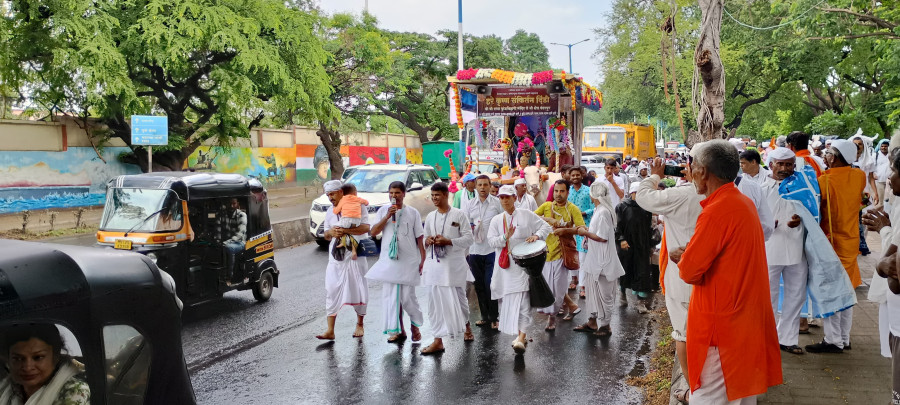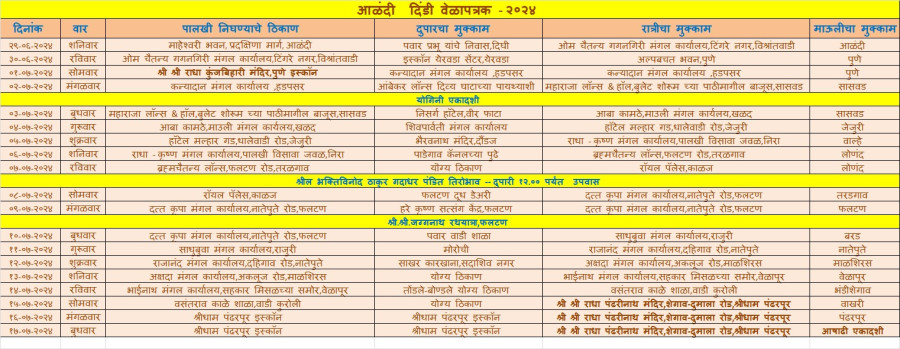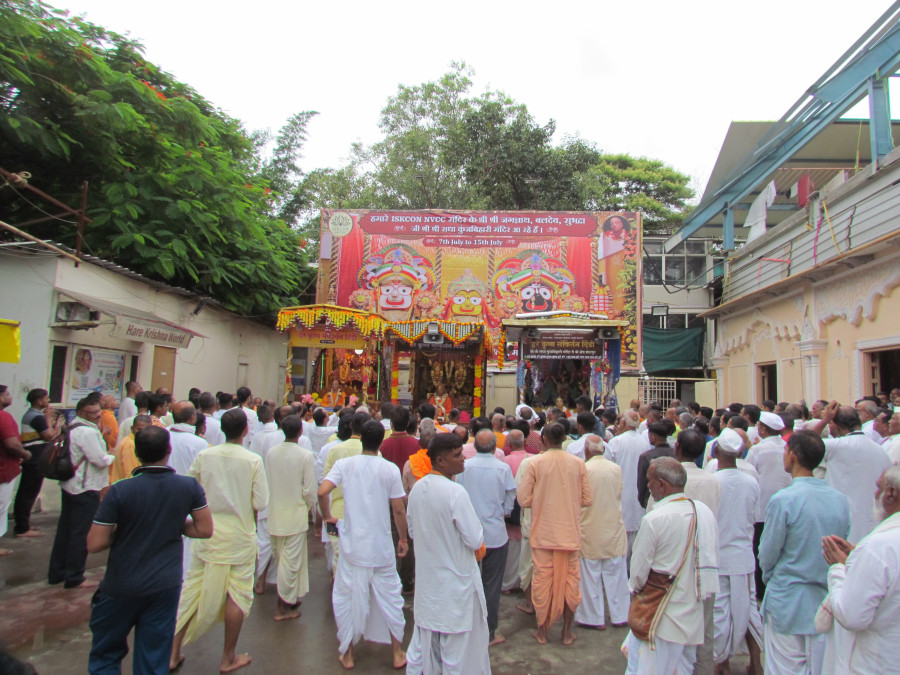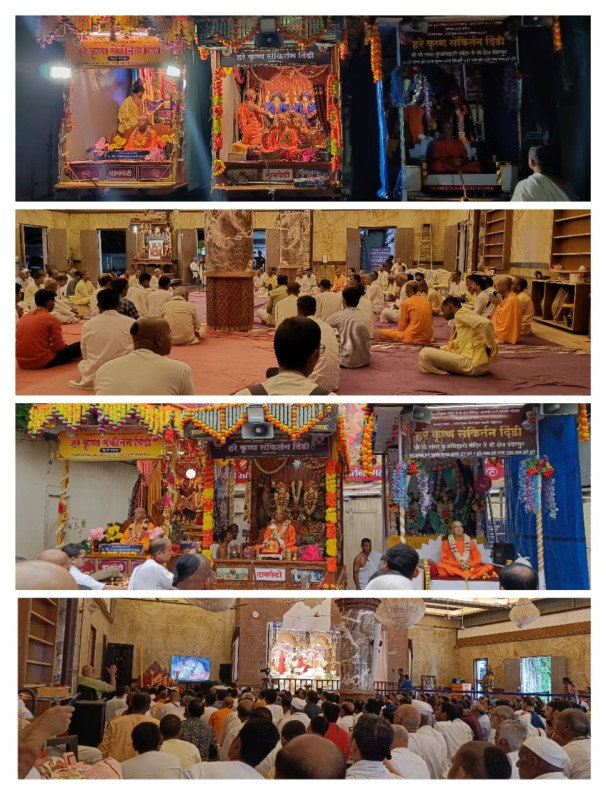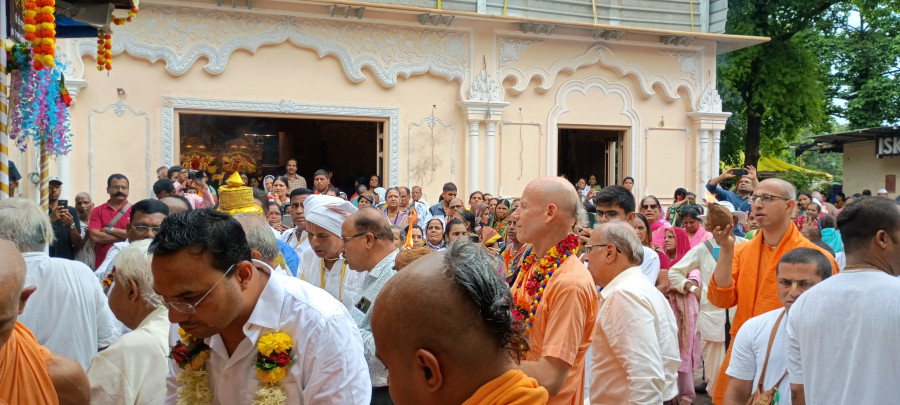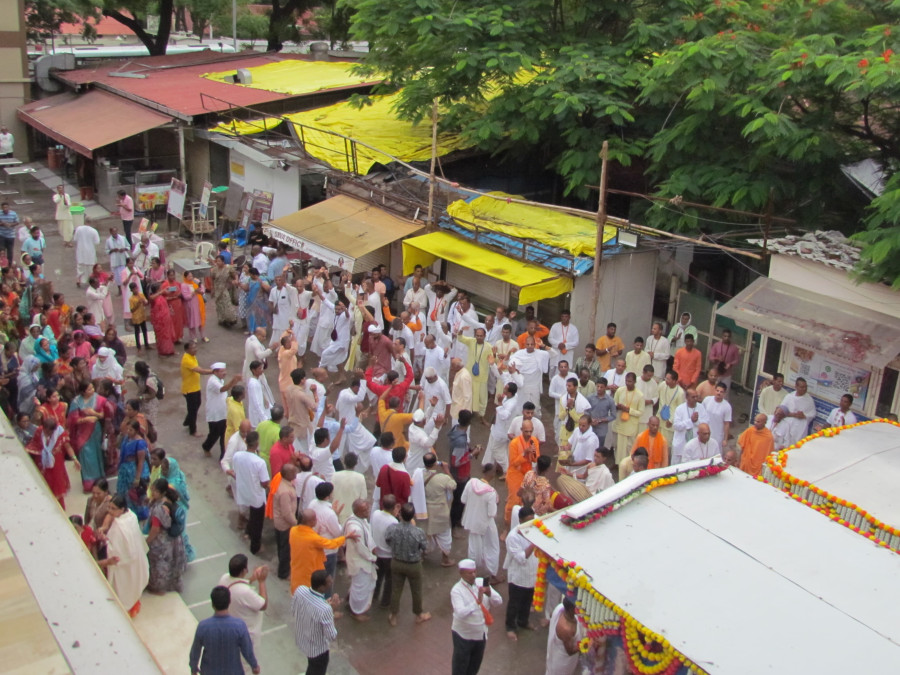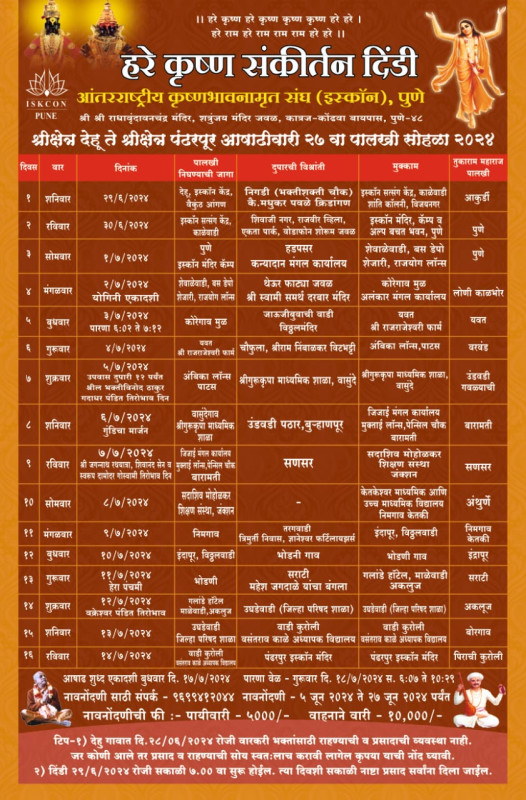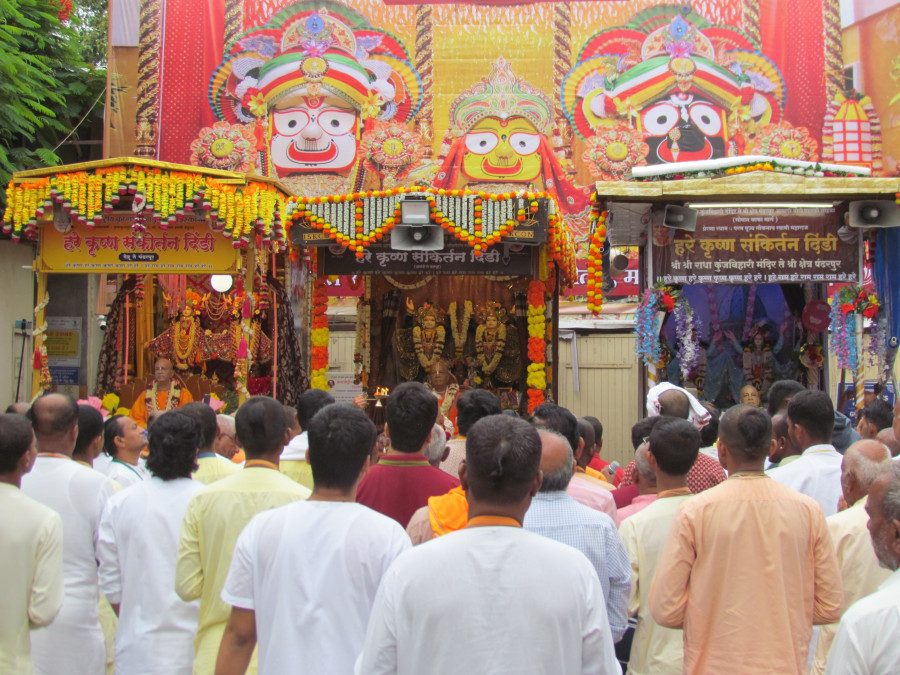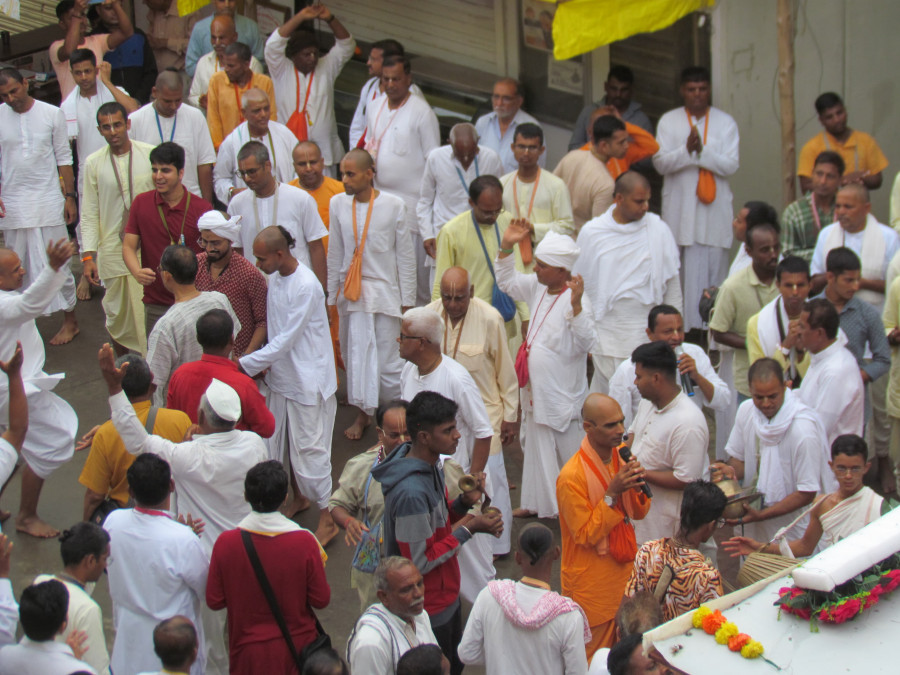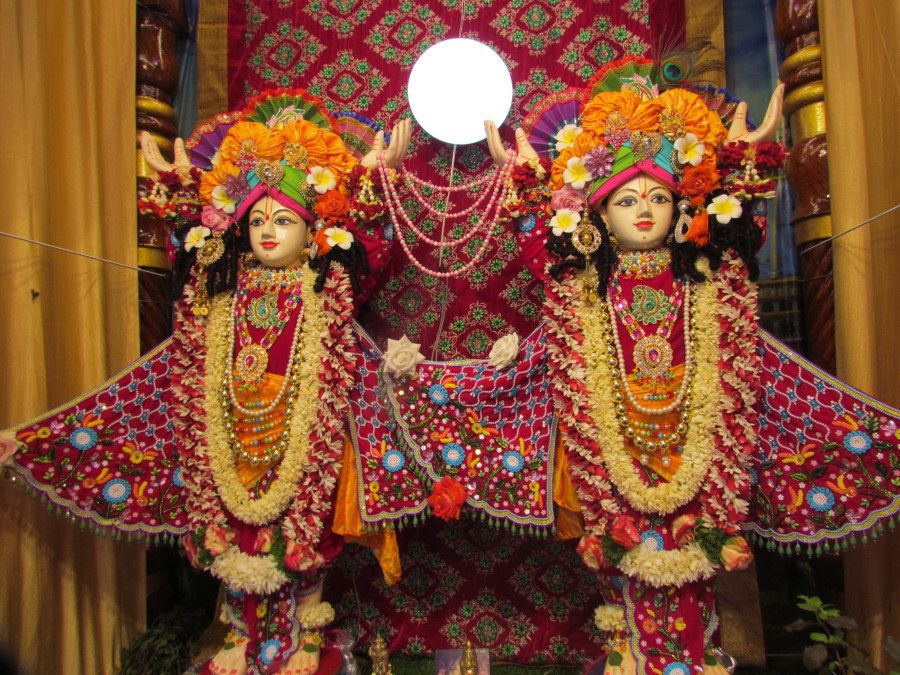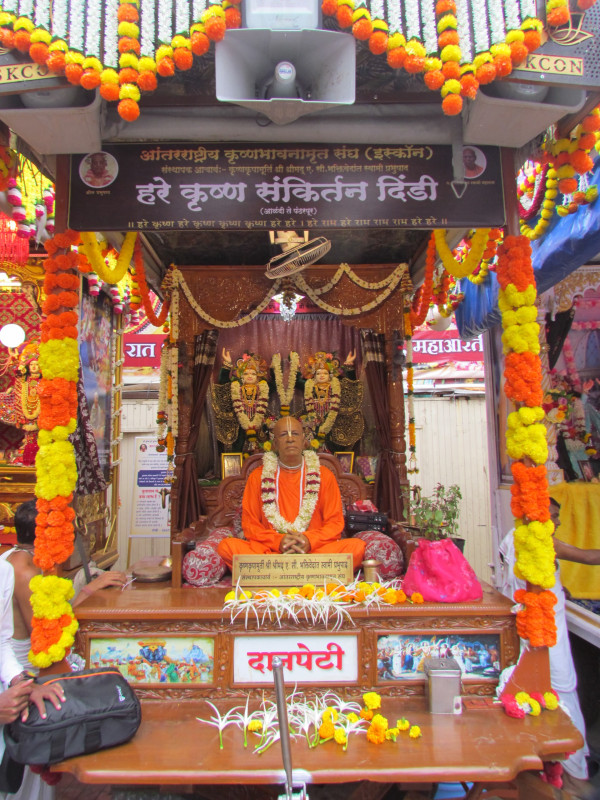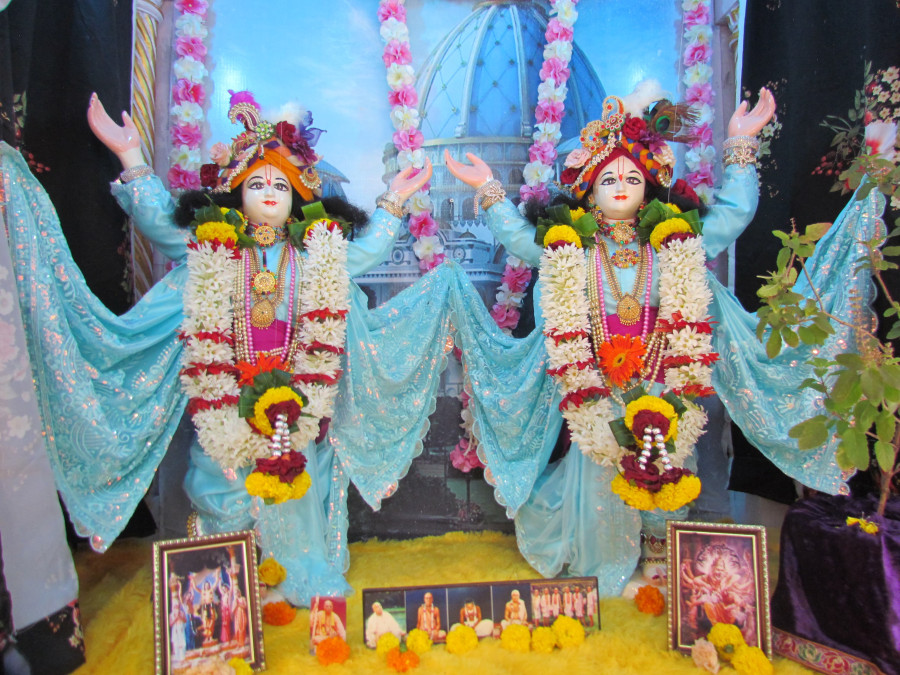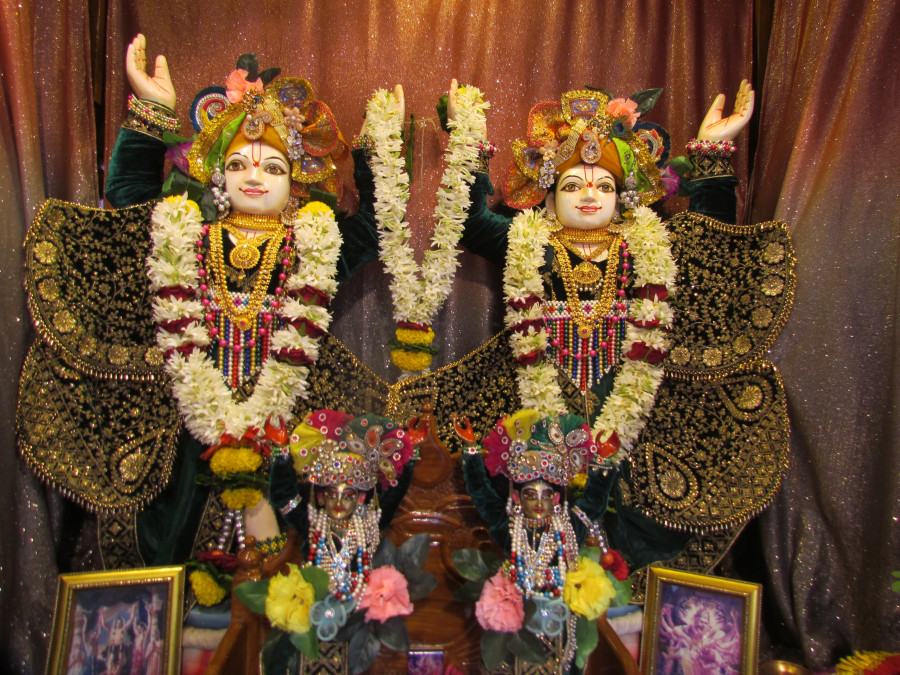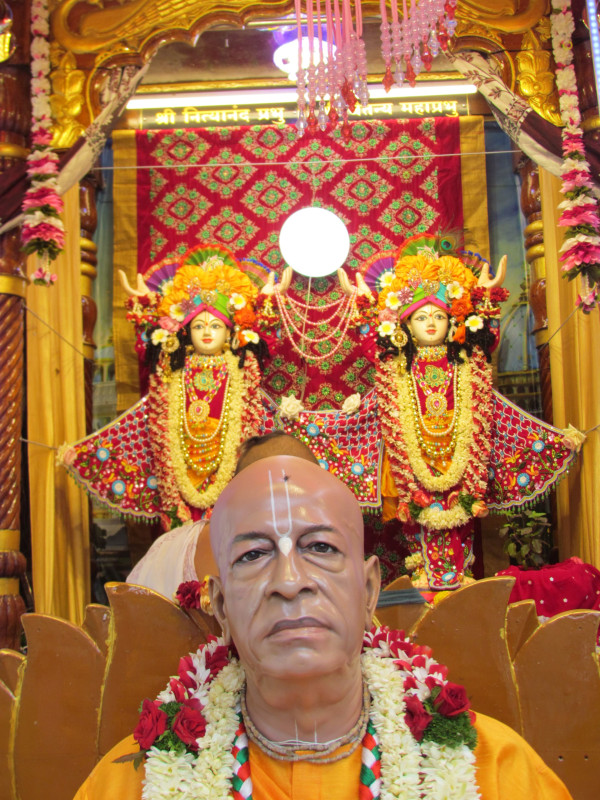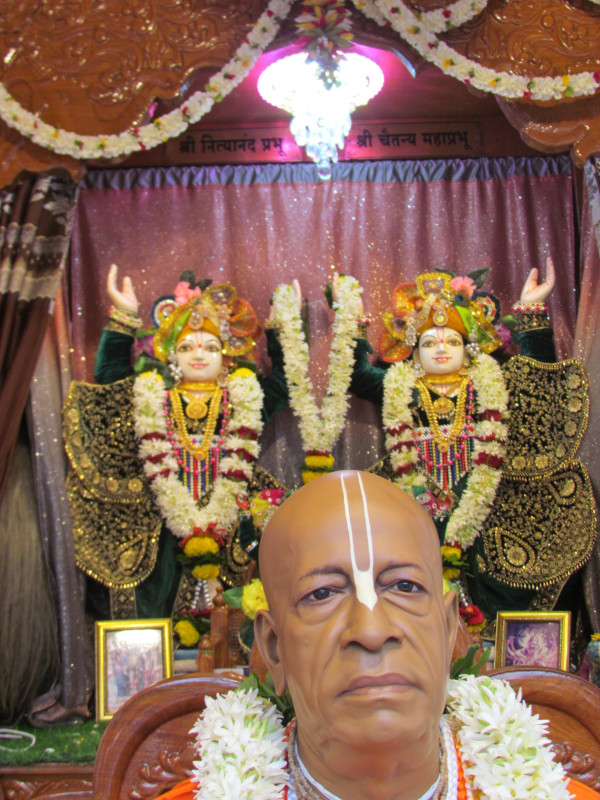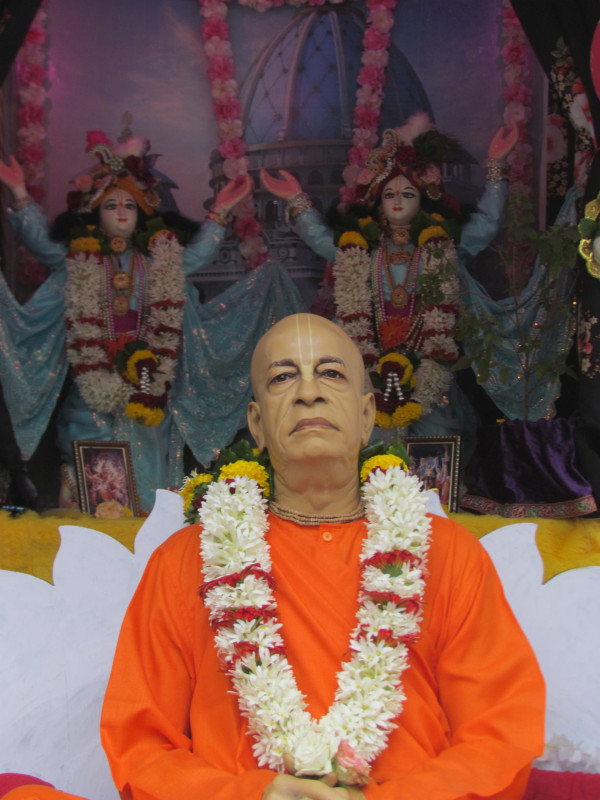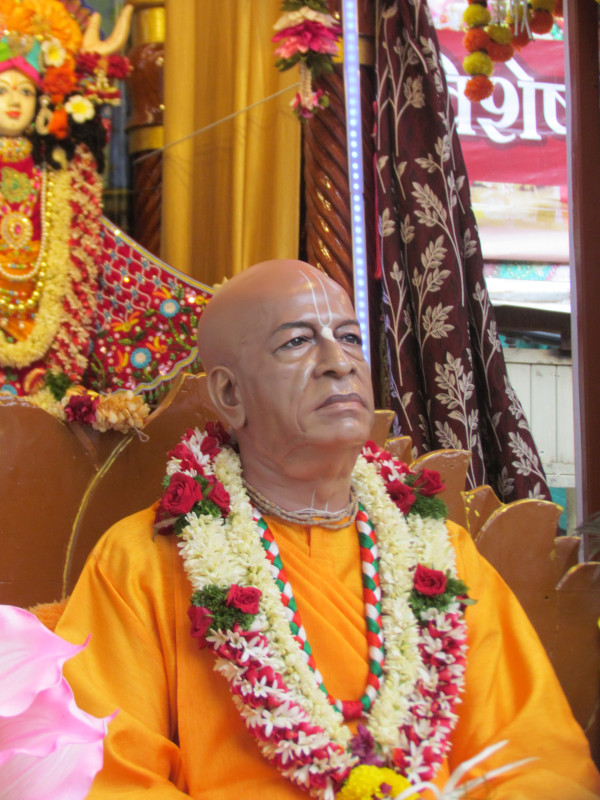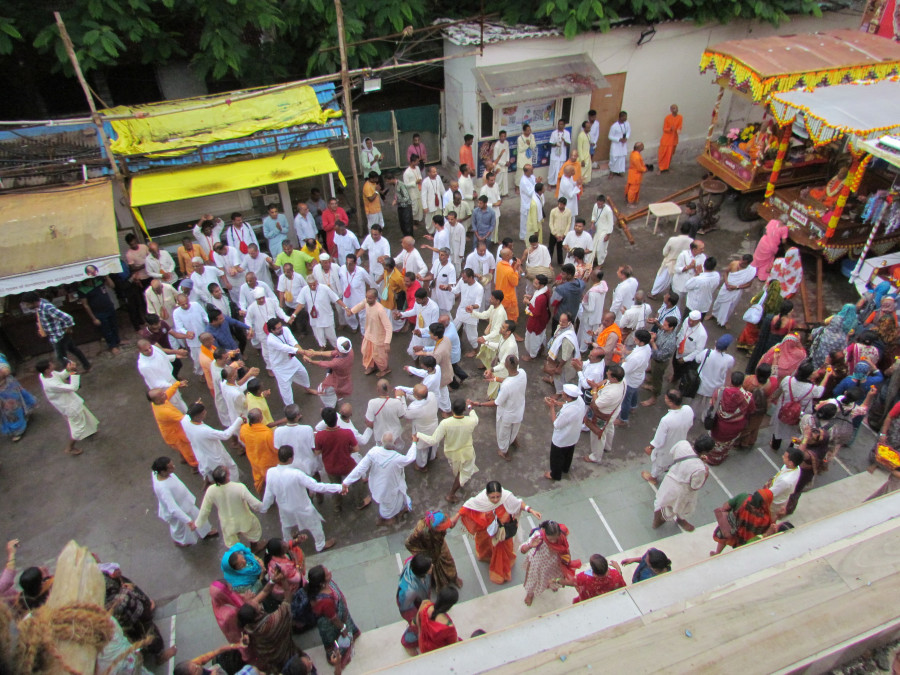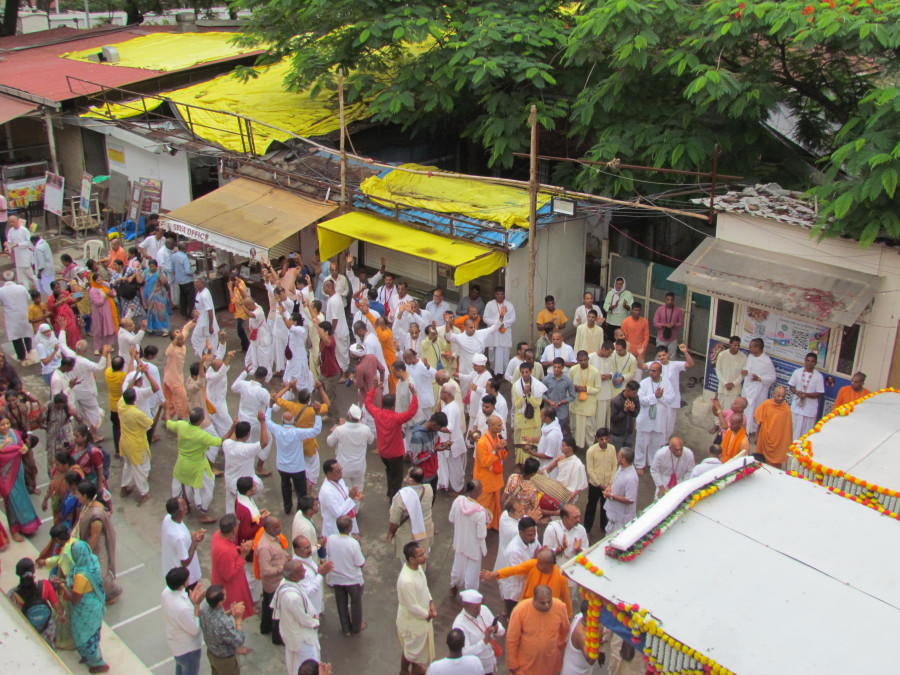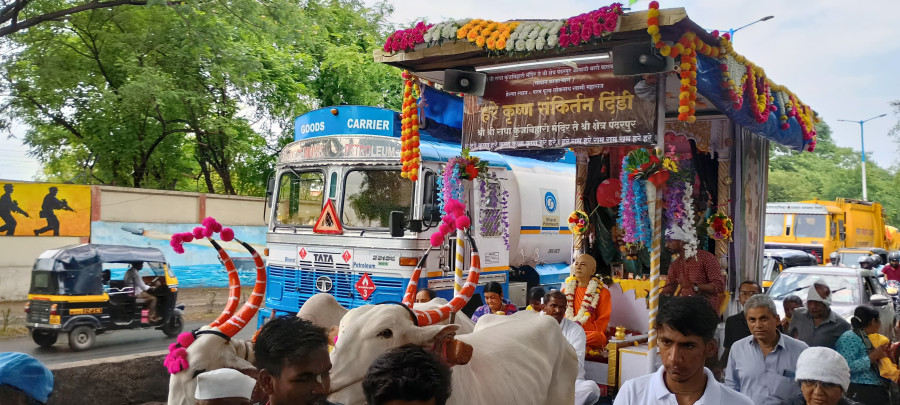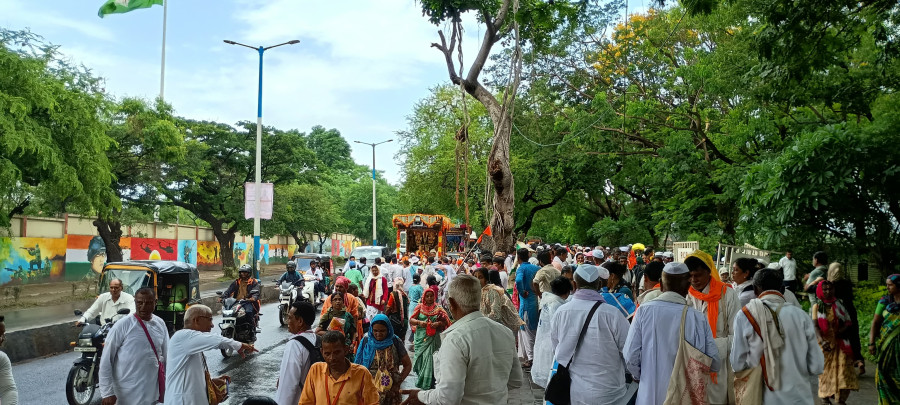By Parthasarthi Dasa (Dindi manager)
The Pandharpur Wari is a yatra to Pandharpurdham in Maharashtra. The 700-800-year-old tradition is undertaken to honour Lord Vithoba (also known as Lord Panduranga). It involves carrying the paduka (India’s archetypal footwear) of a saint in a palkhi(palanquin), most notably ofDnyaneshwar and Tukaram, from their respective shrines to Pandharpur.
Warkari is a Marathi term which means one who performs the Wari and pilgrimsfrom across Maharashtra unite in the procession. The journey on foot takes twenty-one days. Along the way many palkhis join the two most revered palkhis that leave from their towns in thePune district:Sant Dnyaneshwar’sfrom Alandiand Sant Tukaram’s from Dehu. The Wari culminates at Pandharpur’s Vithoba temple (also known as the Sri Vitthal-Rukmini mandir) on the holy occasion of Shayani Ekadashi on July 17.
Devotees walk to Pandharpur wearing holy basil beads and singing the glories of Lord Vithoba and songs like Gyanba Tukaram that commemorate the saints.When they reach Pandharpur they bathe in the sacred Bhima River before visiting the temple, where they then have darshan of their beloved Sri Panduranga.
It’s our great fortune that through ISKCON threedindis – Dehu, Alandi, and Saswad(inaugurated last year) – go to Pandharpur. All three started from theirparticularlocales on June 29 heading for theSri Sri RadhaKunjabihari templein Pune and departingfrom there towards Pandharpur on July1.
Many devotees join the dindi. It’s a sublime experience of love for the Lord that makes us walk and dance for nineteen days to reach Pandharpur. Special features are a complete morning programme, sumptuous prasad three times a day (plus filtered water), nice accommodations (for a small fee), continuous harinama sankirtan with enthusiastic dancing and the participation of a dynamic youth group, massive book distribution, bullock cart procession, daily public programme, and wonderful dramas and skits.
The Warkaris face a lot of discomfort as it’s raining,but they take it as the Lord’s mercy and walk empowered with love for the Lord.As they reach avillage, the residents honour them with a grand reception. Some villagers who can’t walk so much feel blessed by serving the Warkaris. Age is not an obstacle in dindi – we seeladies, elderly folks and even children joining the dindi. The only eligibility is love for the Lord.
Basically, walking in the Wari is seeking the blessing of Lord Vitthal, who is Dwarka’s Sri Krishna located in Pandharpur. He is often depicted arms akimbo standing on a brick,which is referred to as vita in Marathi hence the name Vitthal.
One who dismisses birth and death is Wari, so to walk in the Wari freesthe soul from the cycle of birth and death and that soul doesn’t have to walk in other births.Accordingly,we seeDINDI asDynamic Investment to Nurture Detachment and Intimacy.
Some people question dindi as adynamic investment, saying why walkto Pandharpur leaving their workbehindand seeing that as a waste of time.No,it’s not a waste of time, it’s an investment in time.Devotees give their time to the Lord and our Hare Krishna sankirtan dindi.We do sankirtan all the time.
It is alsoaddiction-free dindi, as the four regulative principles are followed: no alcohol, no non-veg, no gambling, and noadultery. There are many technologically educated people in this dindi who have sacrificed their worldly and materialistic life in the lotus feet of the Lord. They areengaged in devotion, harinama preaching, kirtan, and book and prasadam distributionduringthis nineteen-day holy walk, the penance they do being this way in nature as simple living and high thinkingis taughtto peopleby dindi. So come with us and meet Lord Vitthal, because there is some penance in this and where there is love there is risk. Come and walk in dindi and let’s go to Pandharpur.
Pandharpur dham ki jay!

